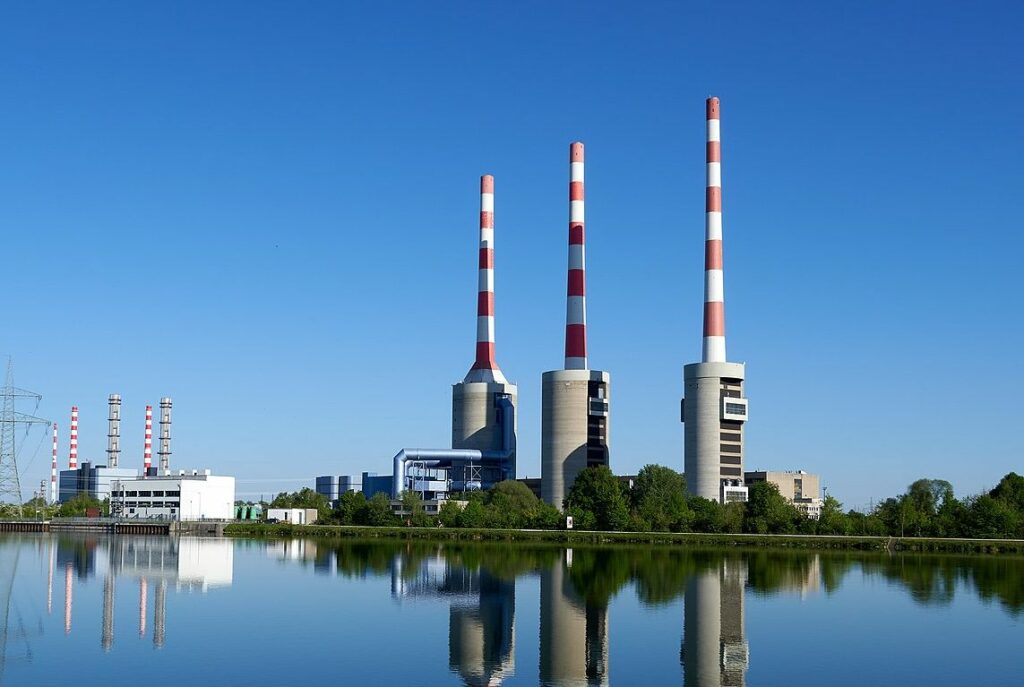The biggest problem with renewable energies is their volatility. Wind is only available for 25 % of the year’s full load hours, and solar only for about 10 % of the year. For this reason, the coalition agreement logically envisaged a massive expansion of gas-fired power plants. However, the approximately 60 new gas-fired power plants with a capacity of 43 GW at a cost of €40 billion, according to the Boston Consulting Group, will now need a new source of supply. This comes at a time when the world’s gas markets are already characterised by shortages and extreme price developments. Currently, the price of gas is many times higher than a year ago. Our guest author Hans Ambos looks at the extent to which it makes sense to use gas or LNG to generate electricity.
Gas-fired power plants have poor efficiency
Gas-fired power plants are bad for climate protection. The CO₂ balance for combined cycle plants (gas and steam power plants) with 60 % efficiency is no better than for coal-fired power plants. For pure gas turbines with only 30% efficiency, however, CO₂ emissions are twice as high. This means that gas-fired power plants make practically no sense for CO₂ reduction, even with a secure supply situation.

Image: Ma. Gr. 1234, CC BY-SA 4.0, via Wikimedia Commons
Dependence on Russia exacerbates the supply situation
With Russia’s boycott, however, the supply situation has now deteriorated massively. With the curtailment of supply volumes, it is even uncertain whether the supply of industry and private households will be guaranteed at all in the coming winter. After his visit to Qatar, Habeck announced that Germany had concluded a gas partnership. However, the Energy Minister Saad Al-Kaabi brought the Germans’ expectations back down to earth quite quickly. Nothing at all had been agreed, Al-Kaabi said only a few days later. Even if they wanted to, they would unfortunately not be able to deliver large quantities of gas to Europe, said the country’s top gas seller at a policy conference in the capital Doha: “Most of our capacities are tied up in long-term contracts in Asia. Unfortunately, this does not allow us to divert larger quantities at short notice and deliver them to Germany.”
Not enough LNG available on the world market to replace Russian gas
The same situation in the US. President Biden promises fracking LNG, but cannot deliver at all, according to the Wall Street Journal. Since most LNG supplies are part of long-term contracts, the plants are currently running at full capacity. The largest exporter is sold out until the 2040s. Therefore, there is very little surplus LNG on the world market that can be delivered to Europe. Cheniere Energy Inc, the largest exporter of liquefied natural gas in the US, has sold out planned production from the $7 billion expansion of its Corpus Christi plant into the 2040s, the company’s CEO Jack Fusco said.
Transporting LNG across the world’s oceans makes little sense from a climate protection perspective
Even if liquefied natural gas could be supplied from somewhere as a substitute for Russian natural gas, the freight rates would be enormous: 3 – 4 LNG tankers per day would be required. That means an additional need for 60 to 80 ships, just for deliveries to Germany. These LNG tankers transport the gas at minus 160 °C and, for technical reasons, lose 0.2 to 0.6 % of their cargo per day as so-called boil-off losses. This means that large quantities of methane, which is harmful to the climate and, according to climate researchers, has a far greater impact on global warming than CO₂, are released directly into the atmosphere. Now the EU has also spoken out against classifying gas, or LNG in the taxonomy, as sustainable. This also makes it more difficult to finance the planned gas-fired power plants.
Habeck creates a billion-dollar grave with decision for gas-fired power plants
In the current situation, it is more than questionable to what extent the gas-fired power plants currently under construction will even be connected to the grid. Thus, with the decision to expand the gas-fired power plants, Habeck has already created a billion-dollar grave just a few months after taking office. As always, the taxpayer bears the costs.
Read also the following articles on this series:
